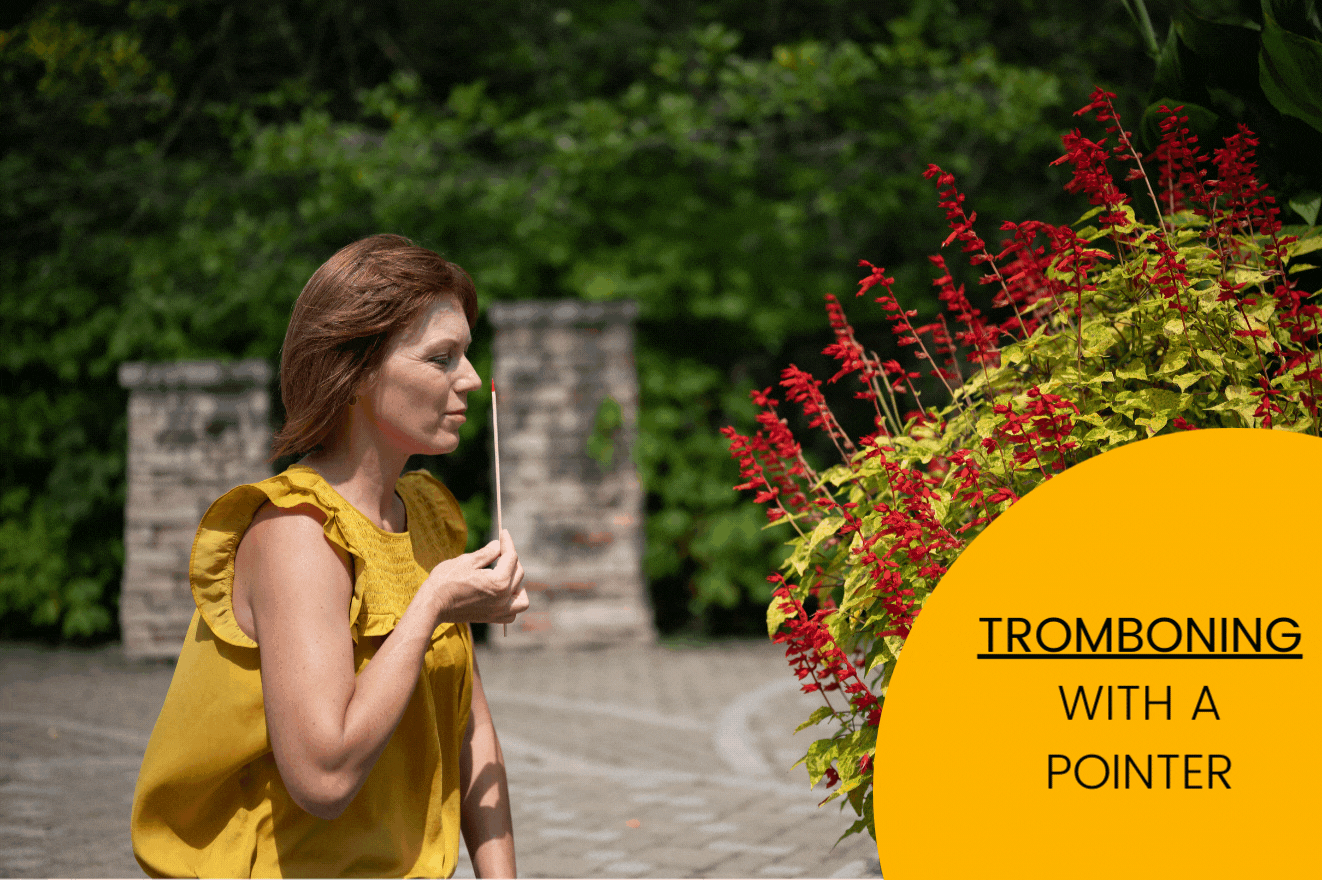You have entered the last section of the Looking with Ease module. Keeping in mind everything you have learned so far, you will now learn how to look, in a relaxed way, no matter what distance you are looking at.
Chances are that if you are nearsighted, you are straining when looking into the distance. If you are presbyopic, you feel pain when looking at objects that are close. If you have astigmatism, your eye muscles are tense when looking in the angle of your astigmatism.
So, before you begin, palm for a few moments and pay special attention to how relaxed your eyes are when they have nothing to look at. Then, look at an object that you can see easily and clearly (the distance of that object will vary for each person). Again, notice how relaxed your eye muscles are, how relaxed your face is. Now go ahead and practice Tromboning and learn how to keep this relaxed state of your eyes and the whole body as you start to look at distances that only provide you with blur.
It is imperative that you make no effort to see! At this point of the program, only learn to look with ease. If clarity comes to you as a by-product, then celebrate it. If it does not, if you “only” learn how to look into the blur with interest and without effort, then you will have accomplished the goal of this lesson. We will work on giving you clarity at new distances in the next module.
LET’S PRACTICE
TROMBONING (for looking with ease at any distance)
Before you start, find a practice object that you like to look at. It can be a flower, a painting, or a picture of someone you love. That object will be your target and should be placed at least a foot past your arms’ length. Practicing with an object that makes you happy, and that you want to see is more relaxing and much more enjoyable.
With your mono shield on, hold a pointer at your eye level
For a few minutes, move the pointer from your nose towards your object of interest, all the way to where your arm can reach and back. Use a slightly swinging motion. You can extend your gaze even past your arm length, into the distance (all the way to your object of interest), then come back to your pointer and bring it to your nose
Go slow, let your eyes follow the object
Stay broadly aware! Pay attention to everything around you as you practice, do not fall into a tunnel vision scenario
Engage your periphery while you follow the pointer by waving your hand next to your face
Switch mono lenses and repeat the process. At the end, practice with both eyes together
Practice Shields: L and R
Tips & Watchouts:
Practice with your dominant eye first
Follow with dual eye practice (without the shields)
TROMBONING (for distance of clarity extension)
Tromboning is a transitional practice. With slight adjustments it can be used as a technique for field of clarity extension, for seeing clearly at new distances. That is a skill you will be working on in the next module.
To practice Tromboning with the goal of extending the distance at which you can see clearly, replace the pointer with another object (a flower, a photograph) and practice with that object. Follow the object as it moves, in a swinging motion, in and out. Move it all the way to your nose and as far as your arm can stretch. Imagine (with your eyes closed or open) seeing the object staying visible and clear while it moves. Exhale when moving the object towards the distance at which it is blurry, inhale when you move it towards the distance at which it is clear to see.
Practice with each eye on its own, then both eyes together.



